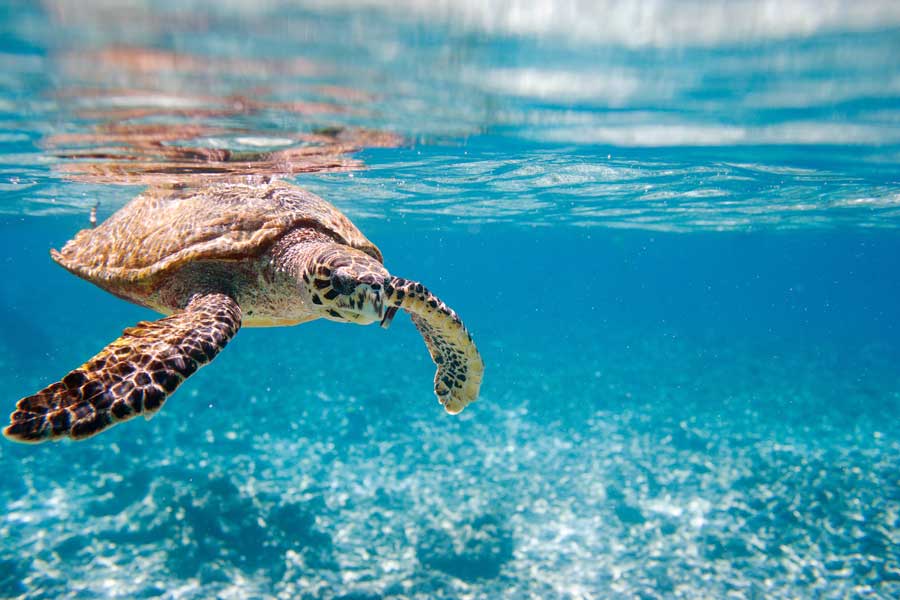Whale Migration, Sea Turtle Nesting, and Discoveries of New Species Reflect the Importance of Biodiverse Habitat Protection in Panamá
PANAMÁ CITY, PANAMÁ (August 16, 2022) – Panamá’s unique position between North and South America – and the Pacific Ocean and the Caribbean Sea – along with habitat conservation programs, offer visitors immersive and memorable opportunities to observe wildlife, both on land and at sea.
Majestic Marine Life
Albeit an enthralling year-round destination for nature and wildlife exploration, now through October is prime time to witness two extraordinary sea creatures in Panamá – Humpback Whales and sea turtles – as they visit this eco-rich Central American country during annual migratory breeding seasons. Whale and turtle watching tours are conducted by local, highly responsible operators skilled in providing exciting sightseeing experiences in a manner safe to marine life.
Holidays with Humpbacks
Panamá is one of only two areas in the world that hosts humpback whales from the Northern and Southern Hemispheres. Nearly 2,000 humpbacks migrate to Panamá’s warm waters to mate and give birth to their young. These “entertainers of the sea” are known for acrobatics which involves breaching or jumping entirely out of the water and theatrically slapping the water surface with their fins. And did you know that only the male humpback regularly breaks into song in what seafarer’s call “mysterious” tunes that can be heard for miles?
Whale watching in Panamá occurs at several locations along the Pacific coast, including the Pearl Islands, in the Gulf of Panamá, closer to Panamá City. Other prime locales are Isla Iguana Wildlife Refuge in Pedasí in the Los Santos Province, the Gulf of Chiriqui near and around Boca Chica, and Coiba National Park, one of the 50 UNESCO Marine World Heritage Sites.
Sea Turtles Treks
The natural wonder known as sea turtle nesting and hatching is a major celebration of new life in Panamá that takes place at over 200+ beaches. Protective nesting sites for sea turtles and newborn hatchlings provide the only time to see this endangered marine creature on land. Visitors can observe five different turtle species in Panamá – all classified as either endangered, critically endangered, or vulnerable by the World Wildlife Fund. Thanks to organizations such as the Sea Turtle Conservancy and Panamá Wildlife Conservation, thousands of sea turtles safely arrive on Panamá’s shoreside to lay eggs, followed by hatchlings making their maiden voyage to open water following gestation. Protective nesting sites for sea turtles and newborn hatchlings provide the only time to see this endangered marine creature on land. Visitors can observe five different turtle species in Panamá – all classified as either endangered, critically endangered, or vulnerable by the World Wildlife Fund. Thanks to organizations such as the Sea Turtle Conservancy and Panamá Wildlife Conservation, thousands of sea turtles safely arrive on Panamá’s shoreside to lay eggs, followed by hatchlings making their maiden voyage to open water following gestation.
Los Santos province along the Pacific coast is host to some of the top nesting sites in the country. For instance, Isla Iguana Wildlife Refuge, which can be reached by boat from Pedasi, is home to a large variety of iguanas and sea turtles. In addition, snorkeling and scuba diving stations are situated around the island to help see marine life in their natural habitat. Other top nesting spots in Los Santos include Isla Cañas, a vital nesting site for green sea turtles, and the Pablo Barrios Wildlife Refuge, a popular turtle research and conservation area.
In the Caribbean Sea, the Bocas del Toro province is the nesting ground for thousands of hawksbill and leatherback turtles. Two of the top nesting grounds are Bluff Beach on Isla Colon and the Isla Bastimentos National Marine Park, where conservation efforts are ongoing for hawksbill nesting sites. The Ngäbe-Buglé indigenous people are instrumental in patrolling and documenting the nesting sites at the marine park.
In early 2022 a tiny rain frog found on Mount Chucantí – the tallest peak in the Majé mountain range – in Panamá’s Cerro Chucantí Private Nature Reserve was confirmed as a new-to-science species. It received the name Pristimantis Gretathunbergae, paying homage to climate activist Greta Thunberg). Greta Thunberg’s rain frogs are endemic to Panamá and have distinctive black eyes – a rarity among tree frogs in Central America. Visitors hoping to catch a glimpse of this little amphibian with a big name can schedule tours through the Panamanian non-profit Adopt a Rainforest Association (ADOPTA).
La Amistad International Park – the largest and most remote nature reserve in Central America, designated a UNESCO site in 1983. The colorful reptile was officially named Bolitoglossa Cathyledecaein May 2022.
No matter what attracts visitors to Panamá, it’s reassuring that nature continues to thrive in this nature-rich eclectic country where a modern Panamá City connects with rainforests, indigenous people, mountain ranges and waterfalls for endless discovery.
For the latest information on Panamá’s health and safety protocols for international visitors, please visit: https://www.tourismpanama.com/plan-your-vacation/advisories/.
About Panamá Tourism
The Tourism Authority of Panamá (ATP) is the Panamánian Government entity that aims to strengthen tourism as a strategic economic sector of Panamá, through the Master Plan for Sustainable Tourism (PMTS) 2020-2025.Developing a sustainable model that generates an increase in employment nationwide, integrates communities, articulates the territories and increases the competitiveness of the industry.
Additionally, PROMTUR Panamá is the official destination marketing organization (DMO) whose primary purpose is to promote and market Panamá internationally. PROMTUR works closely with the ATP to further propel the country’s international promotion as a world-class tourist destination.
Together, ATP and PROMTUR work to promote Panamá’s rich history, culture, natural beauty, and remote locations, which are experienced through the destination’s three heritage routes – Cultural Heritage (multifaceted culture), Green Heritage (extraordinary biodiversity), and Blue Heritage (ocean wonders).


